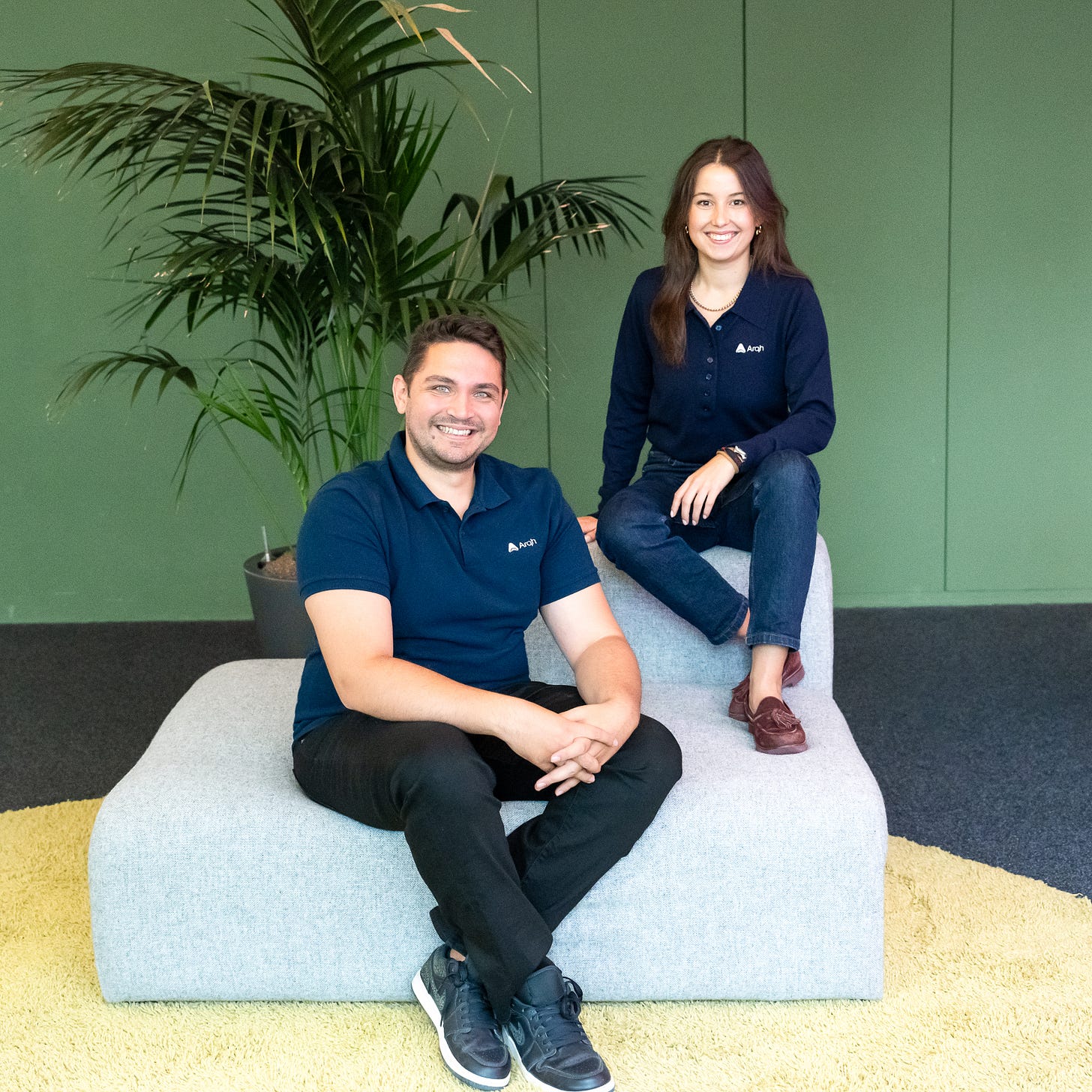Arqh raises $3.8M pre-seed to bring AI to the logistics industry
A conversation with Antonia Unger, the founder and CEO of Arqh, the newest addition to the Merantix Capital portfolio.
The logistics industry is chaotic and full of manual planning, spreadsheets, and phone calls.
It’s the kind of terrain ripe for AI and automation, and a space we’ve been really interested in at Merantix Capital.
Which is why I’m thrilled to introduce our investment in Arqh, which today announced its $3.8 million pre-seed financing round led by our friends at Founderful.
Arqh fuses language models with a proprietary optimization engine, a unique agentic system that continuously re-plans real-world logistics operations and explains its choices to keep human dispatchers in the loop.
I recently sat down with Arqh’s founder Antonia Unger to discuss the current logistics landscape, how AI will reshape the supply chain, and where Arqh goes from here.
Antonia’s background in the logistics space showed her that there was a huge opportunity. “Working side‑by‑side with dispatchers, we saw firsthand what their day‑to‑day looks like and were shocked by the inefficiencies and dinosaur software being the status quo,” she told me.
Here’s our edited conversation below.
Adrian: What’s wrong with the logistics industry today?
Antonia: Critical planning — daily dispatch/orchestration and long‑term strategic decisions — remains largely manual. To automate and optimize these decisions, companies to date had two options: Off‑the‑shelf solvers that capture only a small fraction of real constraints (time windows, HOS, dock capacity, equipment compatibility, service levels, live vs. drop, cross‑border rules, etc.). Or bespoke systems that require 10+ MSc/PhD‑level specialists to build and continually retune as operations evolve.
The net effect is organizations revert to spreadsheets and phone trees. Not because they want to, but because current systems can’t represent the business as lived or re‑optimize fast enough when conditions change.
Our motto: Run your operations with zero spreadsheets and zero PhDs.
How does Arqh work? You talk about your system being both “right brain” and “left brain.” Can you explain what you mean by that?
To build the complete intelligence for logistics there are two requirements: handle the messiness of the real world and deliver mathematical precision. These are our two “brain halves.”
Our “Right Brain” is based on language models and understands policies, tribal knowledge, unstructured inputs and can capture intent and context. Our “Left Brain” is a rigorous optimization layer that encodes constraints, proves feasibility, and delivers measurable outcomes, i.e. the “logic & math half.”
Only when both work in tandem can you make complex optimization usable for non‑technical, rightfully skeptical industry veterans. And as dynamic as the real world, not a static one‑time algorithm.
Can you walk me through a very clear use case of Arqh in plain terms, if I’m not someone super knowledgeable about how logistics works?
One concrete use case is daily dispatch planning for a regional last‑mile fleet (e.g., northern Switzerland).
Without Arqh: At 17:00, a team of planners exports orders from the ERP and begins planning 8–15 trucks per person, based on orders and (optionally) service‑level agreements (SLAs). It’s a long, iterative process to satisfy resource, customer, product, and legal constraints. When execution starts at 07:00 the next day, an employee calls in sick, a dock runs late, traffic builds, or a customer doesn’t open. The plan breaks and firefighting begins.
With Arqh: Arqh ingests orders, driver hours‑of‑service (HOS), equipment, dock calendars, SLAs, and live feeds (traffic, weather, carrier updates). It quickly generates a baseline plan that adheres to all constraints and is 10%+ more efficient than a human‑generated plan.
As disruptions hit, the planner communicates in plain English and re‑optimizes the plan.
The result is faster planning, fewer manual calls, fewer empty miles, better on‑time performance, and calmer operations when things change mid-day.
Other use cases where Arqh supports decision‑making include: Strategic what‑if analysis of warehouse locations, fleet mix, and customer tariffs. Streamlined communication among managers, dispatchers, drivers, and end customers. And easy onboarding of new customers and operational changes.
What’s your background and how did you first identify this problem in the logistics space?
My co-founder Mert and I have an ETH Zurich / EPFL background. We both worked in consulting and organically ended up partnering on multiple logistics and transportation projects. Working side‑by‑side with dispatchers, we saw firsthand what their day‑to‑day looks like and were shocked by the inefficiencies and dinosaur software being the status quo. It makes sense as logistics hasn’t historically attracted as much builder attention, but the gap was bigger than we expected, so we started Arqh to close it.
What is the go to market plan for Arqh?
We’re taking a verticalized approach, focusing first on B2B last‑mile logistics. We’re seeking strategic partners in each sub‑vertical to co‑develop technical blueprints of the optimizer and ensure we cover all requirements in those sub‑verticals.
And market timing is perfect. Language model capabilities are exploding but they lack logic and haven’t yet been connected with powerful, custom optimization. We’re building that bridge.
I’m Swiss, so maybe a little biased here… but can you talk a bit about the Swiss AI ecosystem and how it’s matured and grown in order to help you all succeed?
Swiss talent is highly skilled, and universities are open to collaboration. From very early on we worked with research labs at EPFL and kept close ties with the ETH AI Center. Although ultimately customers are what count, the ecosystem is buzzing, the network is strong, and the talent hungry. We wouldn’t want to build Arqh anywhere else.
Where do you see the future of logistics going? What do these systems look like in 5-10 years?
Over the next decade, logistics will evolve into an AI-orchestrated, self-optimizing ecosystem. In 5–10 years, the work that today consumes armies of planners —dispatching, scheduling, capacity planning, rate discovery -—will be handled continuously by intelligent systems that learn and adapt in real time. Humans won’t disappear, but their focus will shift: they’ll set strategy, tune risk preferences, and manage relationships.
Because data standards and interoperability will have matured, these systems won’t just optimize within a single company, but across entire supply-chain ecosystems. The result are networks that are leaner, greener, and more resilient. Margins strengthen, emissions fall, and operators spend their time steering the system instead of fixing it.
What will you use the funding for?
Growing our core engineering team in order to be able to develop the language layer and optimization blueprints more rapidly in different sub-verticals.
Taking this verticalized approach will get is where we need to be to be able to really disrupt.
Thanks very much for the chat! We can’t wait to see where Arqh goes from here.




